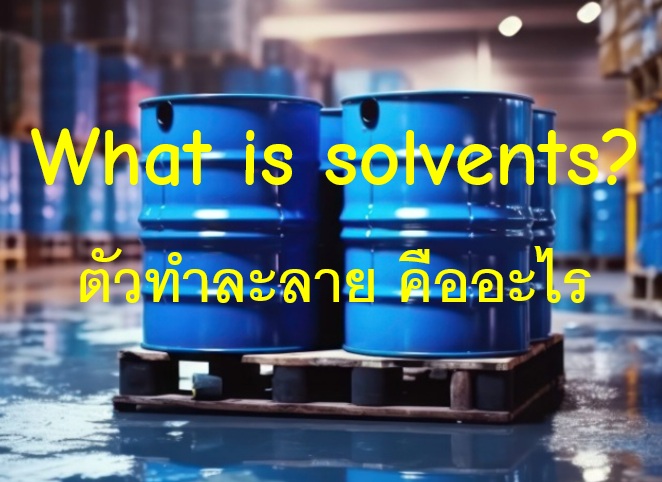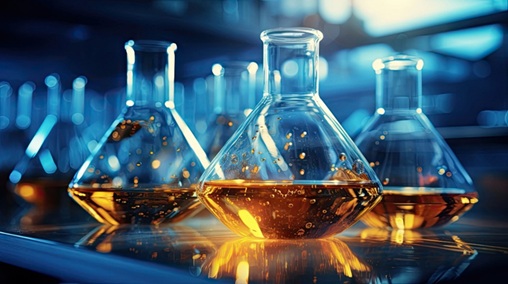Solvent
What is a solvent?
A solvent is a substance that can dissolve a solute. Solvents and solutes are not the same. A solvent can be a liquid, solid, or gas. The solvent that we are most familiar with today is water. So how do we know which substance is the solvent? In cases where substances are mixed and not in the same state, for example, mercury, which is a liquid, and silver, which is a solid, when mixed together, will become an amalgam, which is a solid, meaning that the solvent is silver because it is in the same state as the amalgam. Another example is water mixed with salt to form brine, which is a liquid, meaning that water, which is in the same state as the brine, is the solvent. However, if substances in the same state are mixed, the substance that is in greater quantity will be the solvent. For example, 60% copper mixed with 40% zinc will form brass, meaning that copper is the solvent. Or 78% nitrogen gas mixed with 21% oxygen, the solvent is nitrogen gas.
How many types of solvents are there?
Solvents are divided into 2 types: polar solvents and non-polar solvents. How are these two types of solvents different?
1. Polar solvents
For example, water, which has the chemical formula H2O, hydrogen is H and oxygen is O. They are different elements, so there is a potential difference in the electric charge. In addition, the arrangement of the supporting molecular structure causes a greater difference in electric polarity. In addition, there is also the matter of intermolecular forces called hydrogen bonds. This is the reason why water, which is a polar solvent, naturally has a high boiling point and can conduct electricity.
2. Non-polar solvents
For example, carbon tetrachloride, a substance used for extinguishing fires, has a chemical structure formula of CCl4, carbon is C and chloride is CI. Of course, both are different elements with different potential charges, but due to the arrangement of the molecular structure, the potential charges of the two elements cancel each other out. Carbon tetrachloride is a solvent that cannot conduct electricity and is a non-polar solvent.
Examples of solvents encountered in everyday life
Organic solvents:
Organic solvents are chemicals that are commonly used in various industries. They may be used as raw materials in the production process or as components in products, as well as in laboratories, such as biological laboratories, chemical laboratories, etc. Organic solvents can be divided into several types based on their chemical composition. Each type has different physical properties. Although organic solvents are useful, they are also toxic to humans and the environment. Therefore, we must use them with caution. Organic solvents are compounds that have hydrogen and carbon as the main components, as well as other elements as secondary components, such as nitrogen, oxygen, sulfur, phosphorus, chlorine, etc.
Brass Solvent:
Brass is made from 60% copper mixed with 40% zinc. Therefore, the solvent for brass is copper because they are the same substance. The substance with the higher amount is the solvent.
Vegetable oil solvents:
Vegetable oil is a non-polar substance. When mixed with water, it becomes a polar substance. It separates into layers and cannot be dissolved together.
Water Solvent:
Water solvents are the most common in our daily lives, such as water mixed with salt becomes salt water. Water is considered a solvent or water mixed with sugar. Water is also a solvent.
Fish sauce solvent:
Fish sauce is used as a flavoring agent for food. It gives food a salty taste. It is a liquid solution, meaning a solution in which the solvent is in the liquid state.
Paraffin Solvent:
Paraffin is a fat obtained from petroleum refining. It is clear in color, tasteless and odorless, similar to wax. Its melting point is 47 to 64 degrees Celsius. It does not dissolve in water, but can dissolve in Ether, Benzene and some Esters.
Paraffin is a fat obtained from petroleum refining. It is clear in color, tasteless and odorless, similar to wax. Its melting point is 47 to 64 degrees Celsius. It does not dissolve in water, but can dissolve in Ether, Benzene and some Esters.
Reference: Mitr Water

